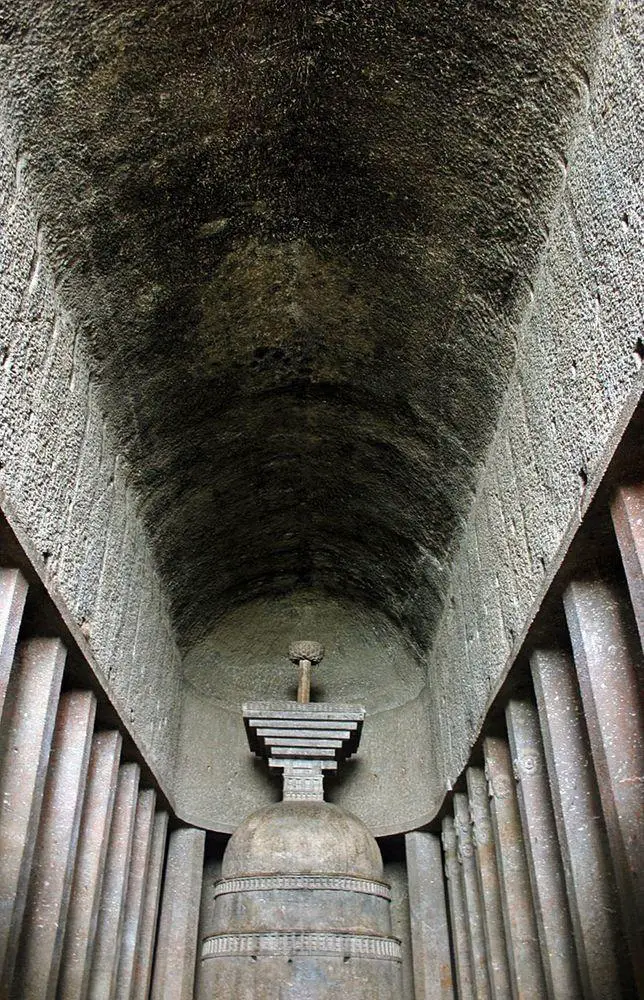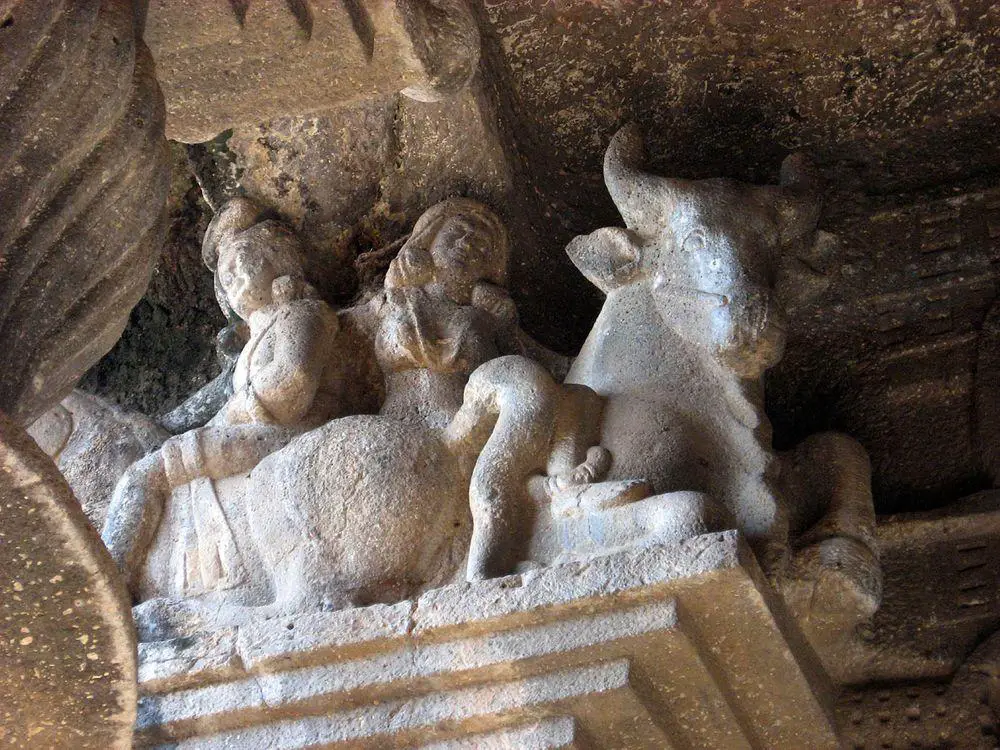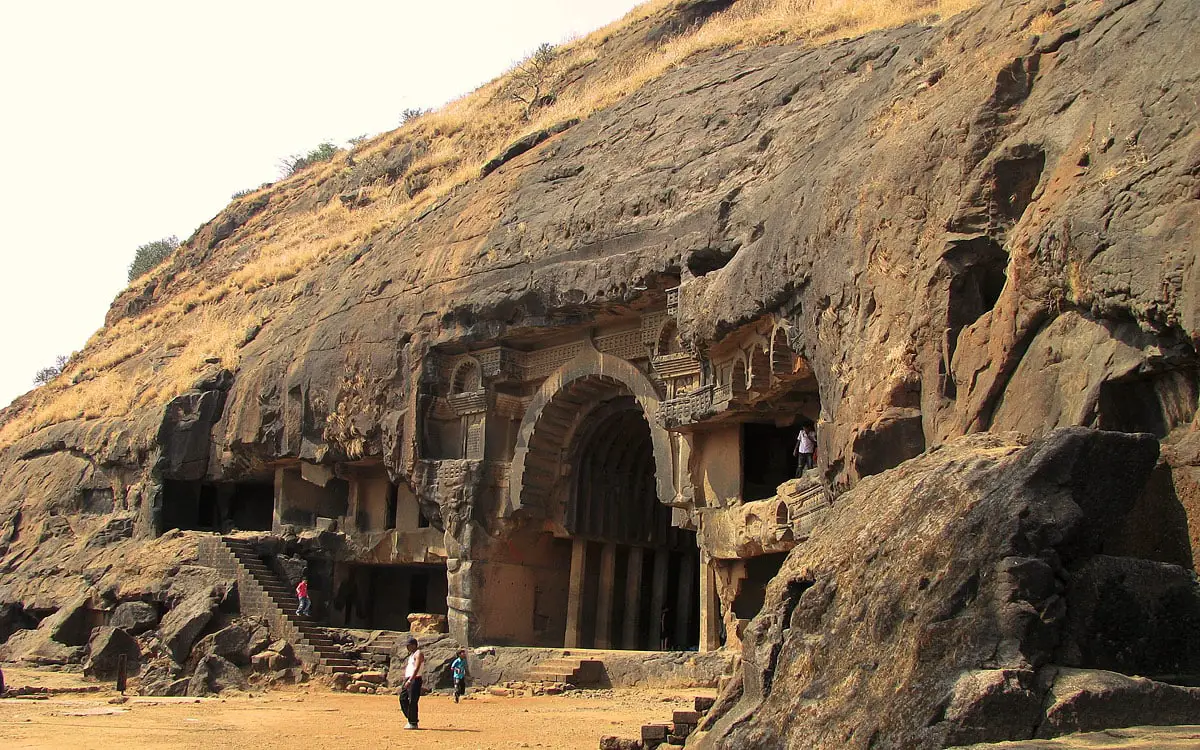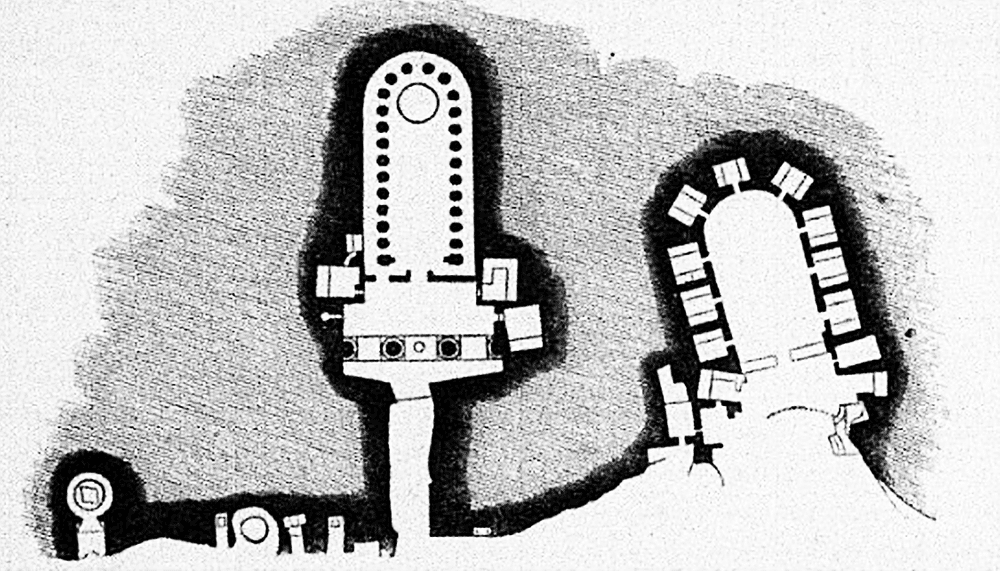World 🢖 Asia 🢖 India 🢖 Maharashtra
Buddhist shrines 🢔 Religious architecture 🢔 Archaeological wonders 🢔 Categories of wonders
Wonder
Bedse Caves

 In short
In short
If compared to many similar monuments, Bedse Caves have little crowds and thus the enigmatic essence of this monument can be enjoyed in loneliness. Although the light reaches the stupa in chaitya at any time of the day, it is advised to come and see the caves earlier in the morning when the light reaches far inside the cave.
 46.3%
46.3%
GPS coordinates
Location, address
Alternate transcriptions
Age
Religion
Map of the site
If you see this after your page is loaded completely, leafletJS files are missing.
 In detail
In detail
Prayer hall and monastery
Maharashtra is extremely rich with ancient rock-cut cave chambers, but especially interesting is the area along the old trade route from the Kalyan port at the Arabian Sea to the impressive Nane Ghat mountain pass. Here are located three groups of exquisite cave temples containing important art values. While Karla Caves and Bhaja Caves are well known, the third – Bedse Caves are comparatively little known. Bedse Caves are rather hard to access, although the final part of the path is easier – here are built fine stone masonry stairs.

Bedse Caves are built at the latest in the 1st century BC (around 60 BC) – thus they belong to the oldest ones in Maharashtra. If compared with the later cave temples, Bedse Caves are much simpler and smaller, with fewer furnishings.
Both main caves are facing eastwards. Nearby there is at least one more cave temple – an incomplete separate cell.
Most interesting cave is chaitya (prayer hall) with an exquisite stupa in it – almost reaching the ceiling. Both sides of the main hall are flanked by octagonal columns. Five columns are adorned with simple ornaments. Several ancient inscriptions are left by the benefactors of caves. The entrance in the cave is adorned with two round pillars and two semi-columns, each of them having beautiful sculptural groups on the cap – humans or deities riding animals – e.g. horse, bull, elephant. The vaulted ceiling of the chaitya is simple and bare, unlike later temples.
The other large cave chamber is vihara – monastery – with nine smaller cells for early Buddhist monks – Bhiku. Monks stayed here mostly during the monsoon – for some 4 months every year. Thus caves got their earlier name – Vasha Viharas – rain caves.
It is believed that monks (nuns!) here wrote the famous "Therigatha" – famous poetic scripture of religious content.
Below the caves there are located a few spring-water tanks – serving as coolers for cave surroundings as well.
Legends
Rather little is known about the history of this ancient temple and this blank spot is readily filled with diverse legends.
One legend tells that caves have been made when the mighty emperor Ashoka left his empire and went in for Buddhism. He ordered the creation of several prayer and meditation places for Buddhist monks and Bedse was one such place.
Stories tell that traders in these caves left their valuables while away. Most likely these caves were used also as guesthouses for travelers.
One of the recent stories tells that British officers enjoyed Bedse Caves so much that they became a rather famous destination. To please the officers’ local authorities ordered workers to maintain caves – to clean and paint them as if these were new structures. These activities continued up to 1861. In some respects, this has helped to maintain sculptures in good condition but on the other side – we do not know what ancient art values were lost under the paint layers. Locals tell that in this way there were removed remnants of ancient plaster with traces of murals.
References
- Bedse Leni, Pune Heritage. Accessed on April 11, 2010.
- Karla, Bhaje, and Bedse caves, posted by Rahul. Accessed on April 11, 2010.
- Description of Bedsa, Flickr, Meghana Kulkarni. Accessed on April 12, 2010.
 Linked articles
Linked articles

Buddhist shrines
Buddhism is one of the world religions and at the same time is a spiritual philosophy with diverse traditions, beliefs, and practices. There exists a rich tradition of architecture expressed in Buddhist temples and monasteries.

Wonders of India
India is the seventh-largest country in the world by area, and, naturally, such a large area contains a huge amount of exciting attractions…
Wondermondo considers that India is the second richest center of architectural heritage in the world after Europe and maybe no single country in the world can match it in this respect.

Rock-cut architecture and sculptures
Rock-cut architecture is a very ancient form of architecture – the oldest structures are more than 5 thousand years old. The resistivity of the natural stone and the constant climate inside these structures has preserved many art values around the world.
 Recommended books
Recommended books
Illustrations Of The Rock-cut Temples Of India
This is a reproduction of a book published before 1923.
We believe this work is culturally important, and despite the imperfections, have elected to bring it back into print as part of our continuing commitment to the preservation of printed works worldwide.



